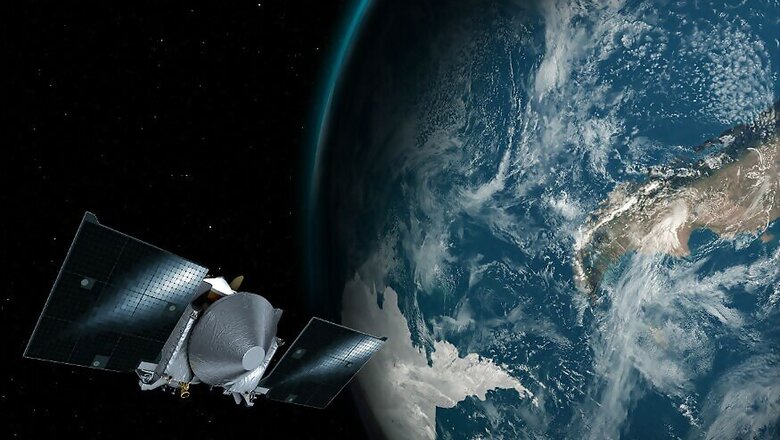
views
Cape Canaveral (Florida): NASA's asteroid-chasing spacecraft swung by Earth on Friday on its way to a space rock.
Launched a year ago, Osiris-Rex passed within 10,711 miles (17,237 km) of the home planet early Friday afternoon — above Antarctica. It used Earth's gravity as a slingshot to put it on a path toward the asteroid Bennu.
Osiris-Rex should reach the small, roundish asteroid next year and, in 2020, collect some of its gravel for return to Earth. If all goes well, scientists should get the samples in 2023.
Friday's flyby was a quick hello: The spacecraft zoomed by at about 19,000 mph (31,000 kph). NASA took precautions to ensure Osiris-Rex — about the size of an SUV — did not slam into any satellites.
"Congratulations @OSIRISREx team on a successful Earth Gravity Assist - trajectory is absolutely perfect - right up the middle!" the University of Arizona's Dante Lauretta, chief scientist for Osiris-Rex, said via Twitter.
Ground telescopes tried to observe the spacecraft while it's in the neighbourhood. NASA posted a picture gallery online.
NASA said the spacecraft's science instruments would be turned on four hours after the closest approach and tested over the next two weeks, scanning the Earth and moon. Lauretta said it would be good practice for operations at Bennu.
Bennu is just 1,640 feet (500 meters) or so across and circles the sun in an orbit slightly wider than ours. Osiris-Rex will go into orbit around the asteroid and seek the best spot for grabbing a few handfuls of the bite-size bits of rock. It will hover like a hummingbird as a mechanical arm briefly rests on the surface and sucks in samples stirred up by nitrogen gas thrusters.
Scientists say the ancient asteroid could hold clues to the origin of life. It's believed to have formed 4.5 billion years ago, a remnant of the solar system's building blocks.
This is the first US attempt to bring back samples from an asteroid. Japan already has visited an asteroid and returned some specks.
















Comments
0 comment